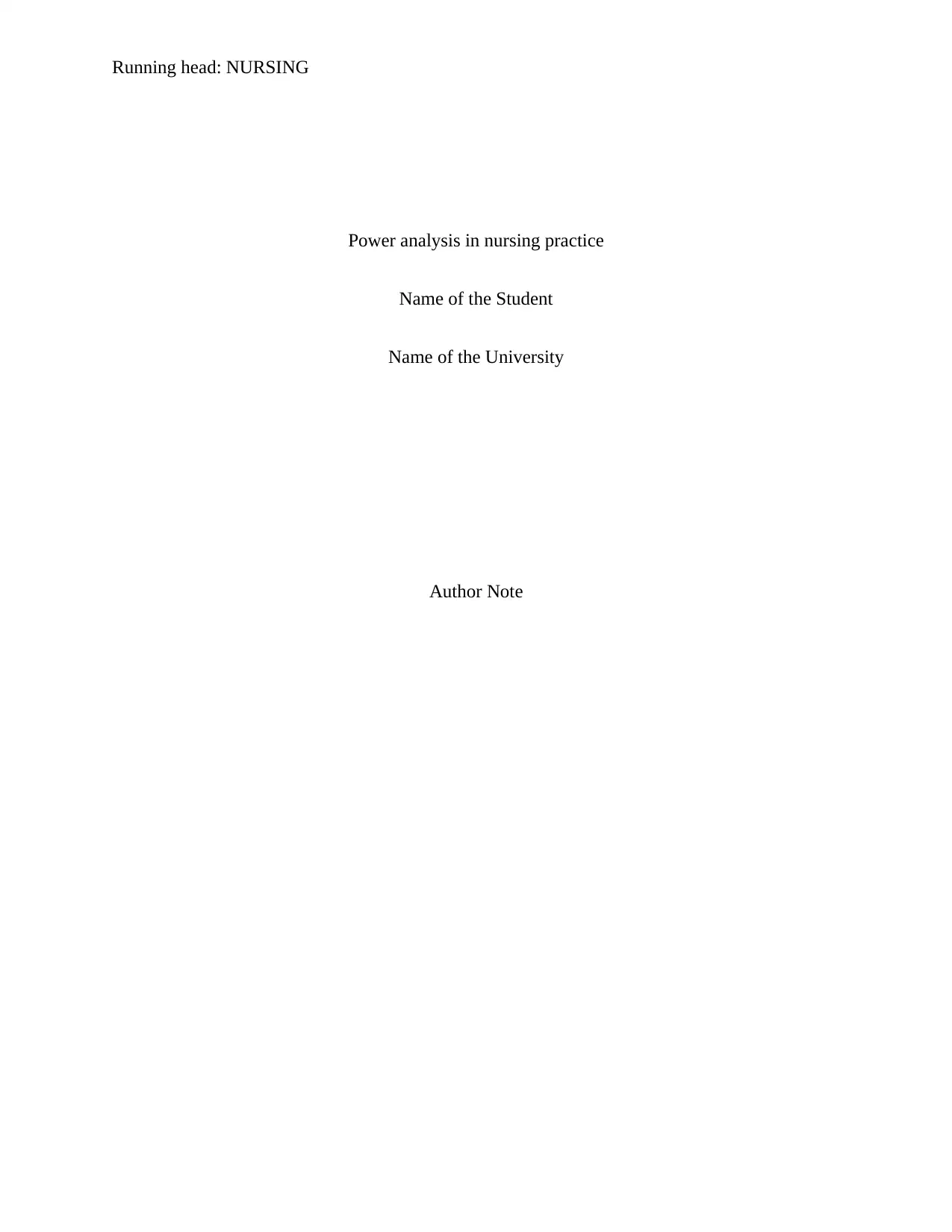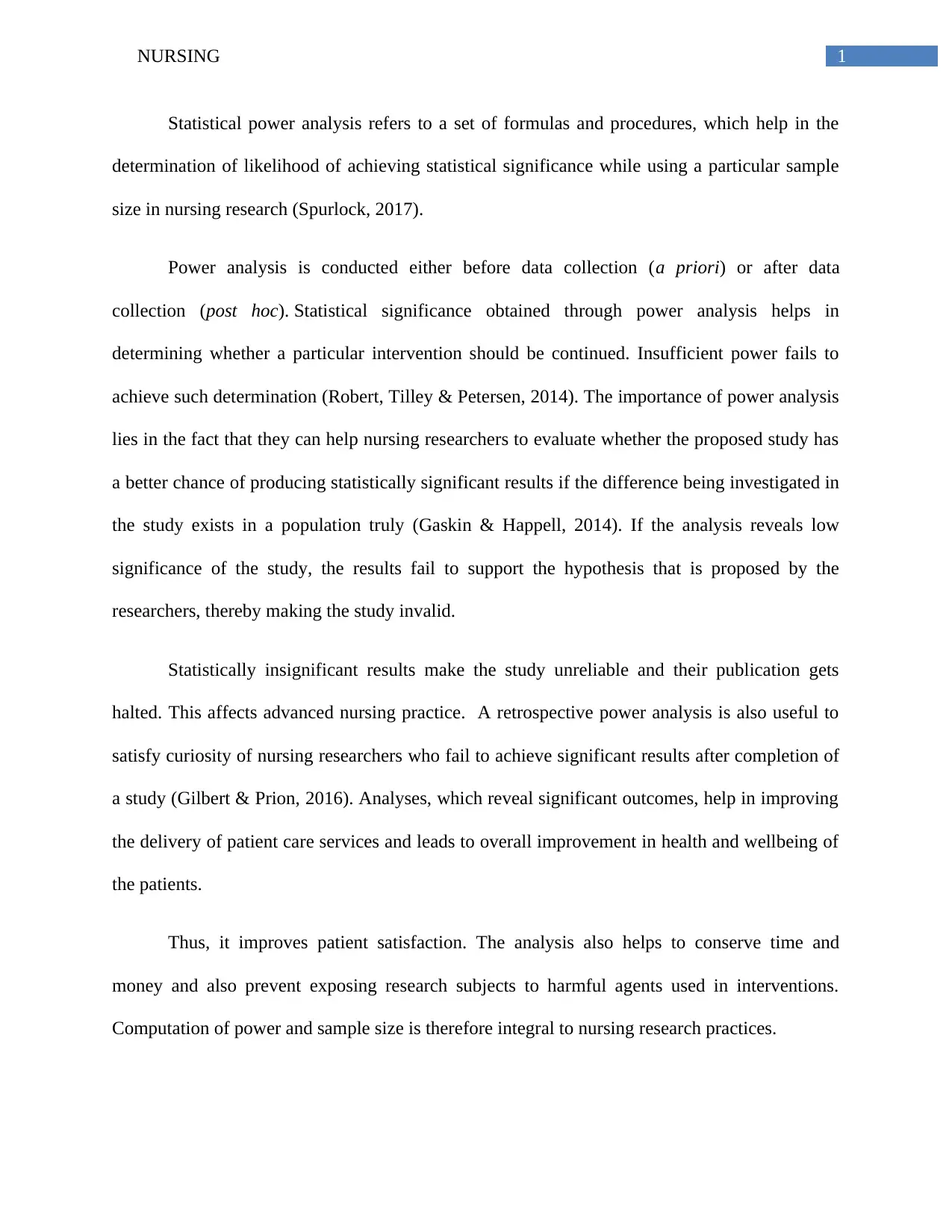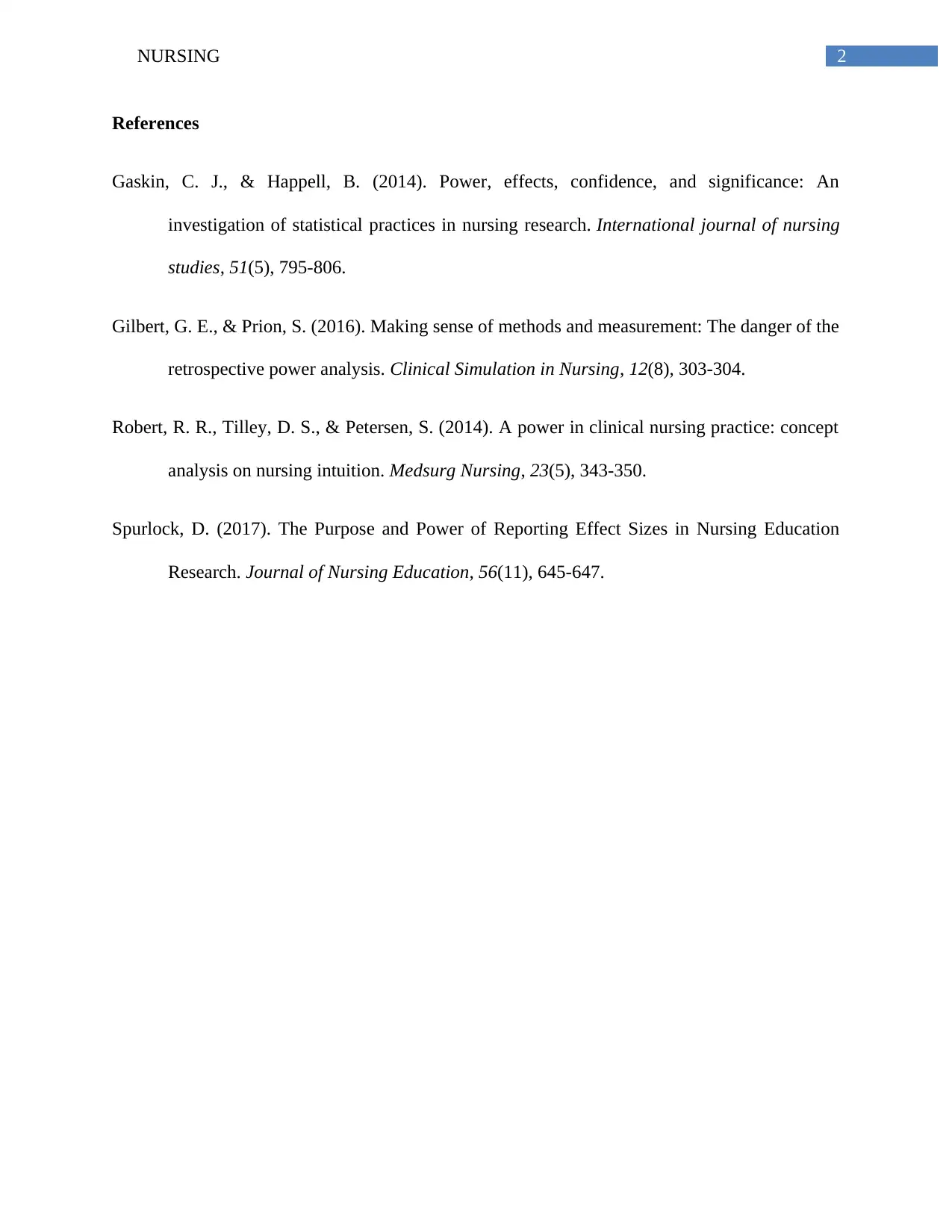Power Analysis in Nursing: Significance, Application, and Impact
VerifiedAdded on 2020/04/13
|3
|477
|170
Report
AI Summary
This report delves into the critical role of power analysis in nursing research, emphasizing its impact on statistical significance and patient outcomes. The analysis explores the use of power analysis to determine the validity of research, highlighting the importance of proper sample size determination and the implications of both a priori and post hoc analyses. The report discusses how power analysis helps in ensuring that nursing research produces reliable and statistically significant results, which in turn, contributes to improved patient care services and overall patient well-being. Furthermore, the report explains how power analysis can save time and resources by preventing the exposure of research subjects to harmful interventions. It also covers the impact of the power analysis on nursing practice and patient satisfaction. The report concludes by emphasizing the integral role of power analysis in all nursing research practices.
1 out of 3







![[object Object]](/_next/static/media/star-bottom.7253800d.svg)